
Dame Zaha Mohammad Hadid was an Iraqi-British architect, artist and designer, recognized as a major figure in architecture of the late-20th and early-21st centuries. Born in Baghdad, Iraq, Hadid studied mathematics as an undergraduate and then enrolled at the Architectural Association School of Architecture in 1972. In search of an alternative system to traditional architectural drawing, and influenced by Suprematism and the Russian avant-garde, Hadid adopted painting as a design tool and abstraction as an investigative principle to "reinvestigate the aborted and untested experiments of Modernism [...] to unveil new fields of building".

The Serpentine Galleries are two contemporary art galleries in Kensington Gardens, Westminster, Greater London. Recently rebranded to just Serpentine, the organisation is split across Serpentine South, previously known as the Serpentine Gallery, and Serpentine North, previously known as the Sackler Gallery. The gallery spaces are within five minutes' walk of each other, linked by the bridge over the Serpentine Lake from which the galleries get their names. Their exhibitions, architecture, education and public programmes attract up to 1.2 million visitors a year. Admission to both galleries is free. The CEO is Bettina Korek, and the artistic director Hans Ulrich Obrist.

Kazuyo Sejima is a Japanese architect and director of her own firm, Kazuyo Sejima & Associates. In 1995, she co-founded the firm SANAA. In 2010, Sejima was the second woman to receive the Pritzker Prize, which was awarded jointly with Nishizawa. They were only the second partnership to be honored with this prize.

Cecil Balmond OBE is a British Sri Lankan designer, artist, and writer. In 1968, Balmond joined Ove Arup & Partners, leading him to become deputy chairman. In 2000, he founded design and research group, the AGU . He currently holds the Paul Philippe Cret Chair at PennDesign as Professor of Architecture where he is also the founding director of the Non Linear Systems Organization, a material and structural research unit. He has also been Kenzo Tange Visiting Design Critic at Harvard Graduate School of Architecture (2000), Eero Saarinen Visiting Professor at Yale University School of Architecture (1997-2002) and visiting fellow at London School of Economics Urban Cities Programme (2002-2004).
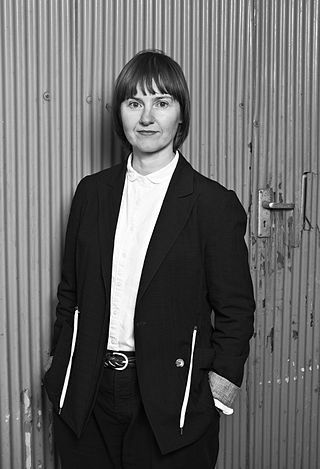
Vicky Richardson is a writer, curator and consultant specialising in architecture and design. In 2014 she was nominated for Debrett's 500, as one of the 20 most influential people in British architecture; in 2015 she was named a 'Woman of the Year', and received an Honorary Fellowship from the Royal Institute of British Architects.

Kvadrat is a Danish textile company that produces and supplies textiles and textile-related products to architects, designers and private consumers in Europe and worldwide. Kvadrat was established in Denmark in 1968 with deep roots in Scandinavia's design tradition.

Neri Oxman is an Israeli-American designer and former professor known for art that combines design, biology, computing, and materials engineering. She coined the phrase "material ecology" to define her work.
Zaha Hadid Architects is a British architecture and design firm founded by Zaha Hadid (1950–2016), with its main office situated in Clerkenwell, London. After the death of "starchitect" Hadid, Patrik Schumacher became head of the firm, at the time with a staff of 400 with 36 projects across 21 countries.

Bjarke Ingels Group, often referred to as BIG, is a Copenhagen, New York City, London, Barcelona, Shenzhen, Oslo and Los Angeles-based group of architects and designers operating within the fields of architecture, product and landscape design, engineering and planning. The office is currently involved in a large number of projects throughout Europe, North America, Asia and the Middle East. As of 2023, the company employs 700+ people.
Alison Brooks, is a Canadian-British architect. She is the founder and creative director of Alison Brooks Architects, based in London. Her awards include the RIBA Stirling Prize, Manser Medal, Stephen Lawrence Prize, and RIBA House of the Year.

Belzberg Architects is an architecture and interior design firm located in the City of Santa Monica, California founded by Hagy Belzberg, FAIA OAA.
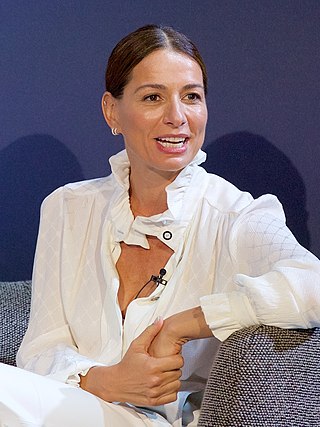
Yana Peel is a Russian-born Canadian executive, businesswoman, children's author and philanthropist who is currently global head of arts and culture at French fashion house Chanel. She was CEO of the Serpentine Galleries from 2016 to 2019 and previously a board member.
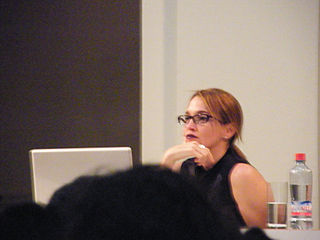
Tatiana Bilbao Spamer is a Mexican architect whose works often merged geometry with nature. Her practice focuses on sustainable design and social housing.

The Museo Experimental El Eco is a contemporary art gallery in the centre of Mexico City, Mexico. It was designed by sculptor Mathias Goeritz, a Mexican artist of German origin who worked closely with the Mexican architect Luis Barragán. Originally built in 1952–53, the gallery was extended by FR-EE/Fernando Romero Enterprise in 2007 "to expand its offices and special services to improve daily operations".
Paulina Morán is a Mexican interior architect and designer.
Eva Franch i Gilabert is a Catalan architect, curator, critic and educator based in New York City who works in the fields of contemporary art, architecture, and public space. From 2010 to 2018, she was executive director and chief curator of Storefront for Art and Architecture in New York. From 2018 to 2020, Franch was director of the Architectural Association School of Architecture in London. She is currently a visiting lecturer at Princeton University.
Professor Sumayya Vally is a Muslim South African architect, and the founder and principal of the architecture and research firm, Counterspace. It is based between Johannesburg, South Africa, and London, United Kingdom. She rose to prominence and limelight receiving international acclaim at a young age in the field of architecture.
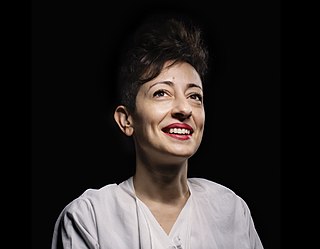
Lina Ghotmeh is a Lebanese-born architect and founding principal of Lina Ghotmeh – Architecture based in Paris, France. Born and raised in Beirut, she introduces a distinctive architectural posture informed by concepts of rebirth and renewal with natural materials and traditional building techniques. Her work is celebrated for its sensitivity to history and materiality, linking communities past and present, ultimately seeking to create a sustainable, inclusive architecture.
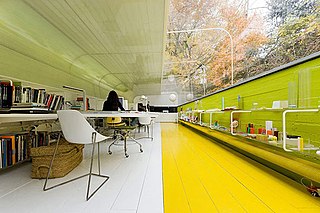
Lucía Cano Pintos is a Spanish architect. Cano, together with José Selgas, cofounded the Madrid studio SelgasCano, whose work is distinguished mainly by the use of polychromy, creative exploration with new materials, and an understanding of the relationship between architectural work and surrounding landscape.
Rozana Montiel is the founder and director of an interdisciplinary Mexico City architecture studio known for its socially conscious and community-oriented approach to design. Montiel has been recognized for her sustainable development and inventive solutions for enhancing the public realm. Montiel’s work has garnered international attention and has been exhibited in multiple countries and biennials. Montiel is a member of the editorial board of the Architectural Magazine Arquine.

















